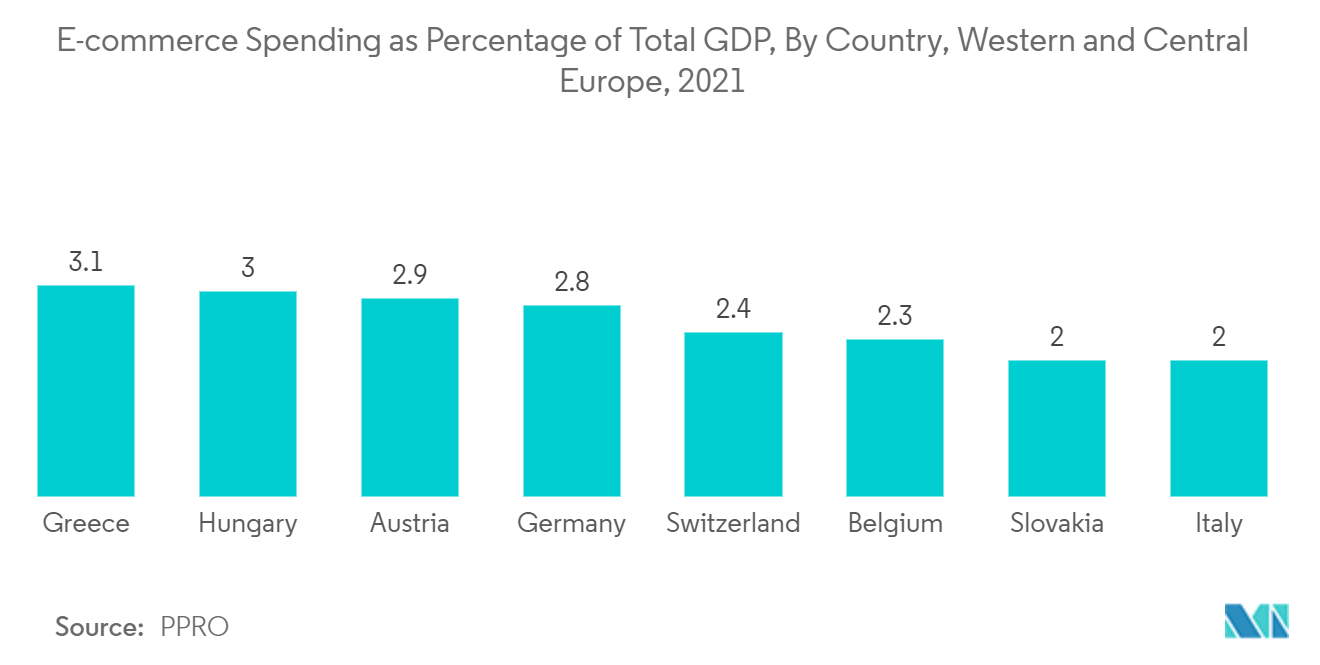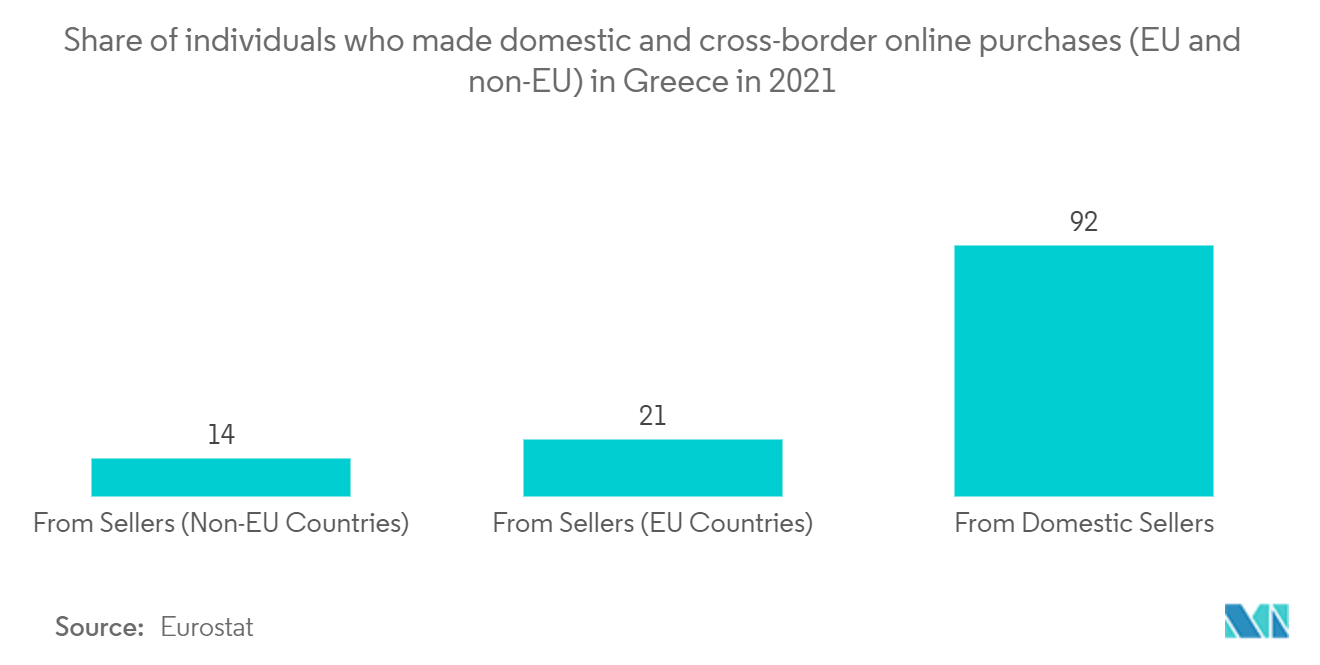Market Trends of Greece E-commerce Industry
This section covers the major market trends shaping the Greece E-commerce Market according to our research experts:
Significant Market Growth is Expected Post the COVID-19 Outbreak
- In Greece, only 4% of shoppers would switch stores before the pandemic, but that number has risen to 26%. This trend is bolstered by investments announced by several significant firms interested in developing their online marketplaces. According to a recent study by the Hellenic Federation of Enterprises (SEV) Digital Transformation Observatory, a company with an online presence can generate up to 20% more sales than one without.
- According to the Hellenic Statistical Authority's (ELSTAT) 2020 annual ICT report, E-commerce still has room to develop because only 47% of the population shops online. According to the 2021 iteration, the count has increased to 58.3%, which signifies still much scope for the population to adapt to utilize E-commerce platforms better. Fashion (31%), electronics & media (25%), food & personal care (19%), toys, hobby & DIY (16%), and toys, hobby & DIY (16%) account for the majority of E-commerce income in Greece.
- The economic crisis still influences greek consumers' shopping patterns and trends. Compared to the European average, Greek customers research more than they buy online. The Greek consumer's mindset has shifted due to the COVID issue. More than 60% prefer online shopping to in-store buying, and 49% say they will continue shopping online even after the COVID situation stabilizes.
- After searching online through search engines and price comparison services, Greek online buyers make more than 65% of their total physical purchases. This supports firms' significant investments in digital marketing to draw customers to their physical locations.

B2C Segment to Drive the Market Growth
- In January 2022, according to a half-yearly survey conducted by the E-Commerce and Business Laboratory (ELTRUN) of the Athens University of Economics and Business, in partnership with the Association of Business and Retail Sales of Greece, the total value of B2C E-commerce (products and services) for 2021 was estimated to be EUR 14 billion. The survey also suggested at least 15,000 Greek companies have several online stores and a more organized digital sales channel to have significant online sales of more than EUR 10 million.
- Similarly, the means to reach out to more Greek audiences revolves around language as a barrier, which is addressed by translated versions offered by B2C websites, leading to better reachability, website visits, and more sales recently. As reported by ITA, in the US, only one in ten consumers buy directly by clicking an ad, and 57% of consumers mentioned that they would be reluctant to purchase from a website that is not offered in their language. Certain customizations to cater to the local audience have benefitted the Greek E-commerce market.
- The price is the first reason consumers choose where and what to purchase. 25% of consumers mentioned that they do not buy across borders since shipping costs increase the final price of the item and 24% mentioned that they are concerned about fees required for customs clearance. Sellers who say shipping and customs costs when calculating the final price are more likely to attract online buyers, especially if they have new products not provided in the domestic market.
- Most B2C platforms are reached through handheld devices like smartphones and tablets. Hence, internet penetrations and network infrastructure development in the region has also played a huge role in bolstering the reach of B2C E-commerce platforms to the general public. This increased the sales of goods purchased through the internet. According to Eurostat, 63% of internet users bought goods or services online in 2021, compared to 59% in 2020 and 51% in 2019.


